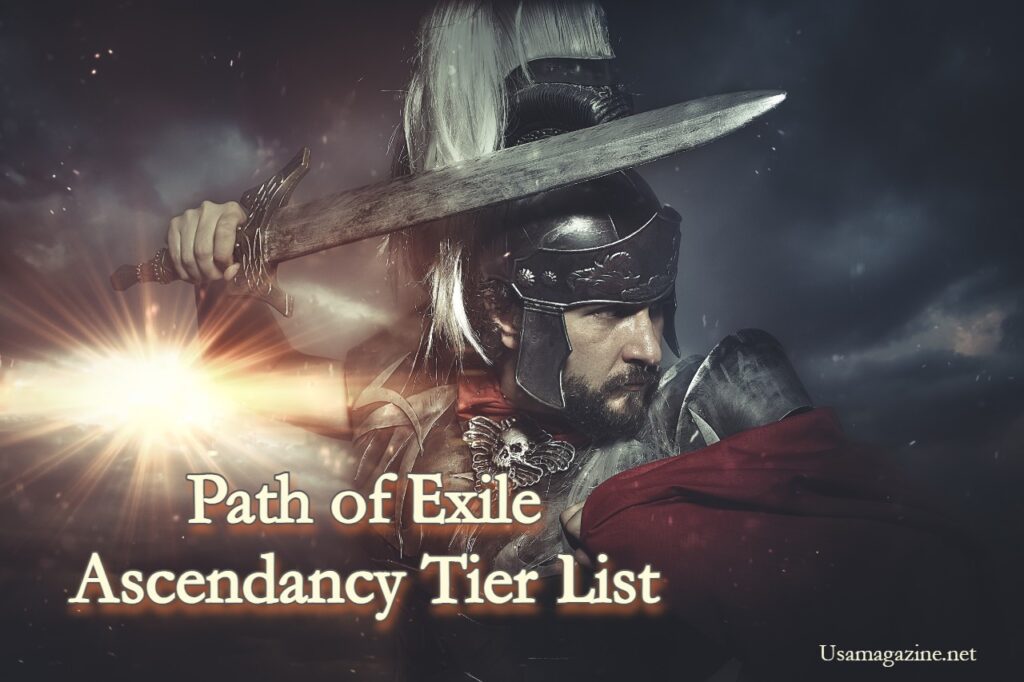While there is a truth to the saying “to each their own”, it can’t be denied that in video games, there are certain classes that are better than the rest. Same is true in Path of Exile. We’ll stop beating around the bushes: here is the current tier list for the Ascendancies. With this, you’ll know whether your chosen Ascendancy is worth spending POE Currency on.
But before anything else, a disclaimer: this is not an absolute and official list. Rather, this is simply a guideline on how Ascendancies fare against one another. It is entirely possible to create a solid build using a lower-tier Ascendancy that outperforms another build from a supposedly high-tier Ascendancy.
D-Tier
First off the list is the Guardian, a Templar ascendancy that is in the lowest rung. This, however, is no fault of its own, as it is designed to soup up Aura skills, and Path of Exile isn’t exactly known for being a multiplayer experience. Sure, there are those that play with others, but they are few and far in between. In fact, most of them play with people they personally know.
Nevertheless, if you have people you play with and you’re all about supporting, then go for the Guardian.
The other two D-Tier Ascendancies are Chieftain and Juggernaut, whose issues stem from their lack of flexibility. There are meta builds for it, and it’s possible to come up with experimental builds as well, but the latter is difficult to theorycraft, let alone actually make. Plus, they are few and far in between. Only pick these two up if you know what you’re doing, or you don’t and have no plans to take your run with them seriously.
C-Tier
Ironically, the Saboteur is here despite being one of the best League starters, and can even do Hardcore content. This is because its play style is niche, and the builds that can be created from it are limited. The Champion suffers the same problem, as it is considered a strong but niche and one-trick pony Ascendancy.
Worse-faring Ascendancies are Berserker, which is good but outshined by many other classes despite its supposedly high-risk high-reward play style, and the Deadeye. The latter, however, doesn’t share the same play style problem, and is starting to get better because of a few buffs thrown its way.
B-Tier
Finally, we are right down the middle. Starting at the center is the Hierophant, which was nerfed to the point that it was almost kicked off the tier. Thankfully, for the things it has lost, it was either almost or more than made up for it with nodes that are geared towards the Arcane Surge ability. This gave the class a new lease on life as a mana-based damage-dealer.
The Pathfinder, meanwhile, was knocked down to the B-Tier from the upper strata. For those that want a Flask and Poison-oriented play style, it’s still worth picking. This is especially true thanks to the Toxic Rain build, which can be bolstered by many of the things the Pathfinder has an affinity with.
Another Ranger Ascendancy in the tier is the Raider, which was bumped up by Dexterity builds that rely on Toxic Rain, Elemental Hit, and Blade Blast.
Last but not least would be a long-time resident of the tier and continues to be in it today is the Slayer, which is arguably one of the best melee classes around. With Cyclone, high critical strike chance, and protection from reflection, it will stay here for quite longer.
A-Tier
Boasting balance on offense and defense, the Gladiator is deservingly in this tier thanks to its versatility. Whether it goes full-on DPS with Dual Wielding or a more balanced approach with Shield-Blocking, it relies on Bleeding and Bleedsplosion AoE that deals with hordes quickly.
Then there is the Trickster, which is just as balanced in offense and defense as the Gladiator. In fact, the only reason why it’s not in S-Tier is because it’s usually used as a league starter, then players switch to other classes.
Inquisitor, on the other hand, got boosted to A-class. With Ritual’s launch, it became a true mixed spells-and-attacks battlemage archetype.
The Occultist is also a solid A-tier candidate, thanks to its proficiency with Curses, allowing it to outshine many classes when it comes to dealing damage over time.
S-Tier
Finally, the top. Opening the Apex is the rightly named Ascendant. By sheer virtue of versatility, it is considered as one of the best Ascendancies in the game. With the right planning and items from POE Trade, if the Ascendant can make it work, then it’s a good build.
As for the more standard Ascendancies, the Necromancer deserves first mention. Summoning minions that deal and absorb damage on the caster’s behalf, it’s got the perfect balance between offense and defense with lots of survivability thrown for good measure.
The Assassin, on the other hand, continues to be good despite its many nerfs. With its affinity to critical strikes, poison, and power charges, as well as a very unique play style, it’s easy to see why it’s in S-Class.
Last but definitely not the least is the Elementalist. Thanks to its affinity to elements, be it with offensive AoE spells and golems, it can be just as good of a summoner as the Necromancer, if not slightly better.
Having said all that, which Ascendancy class will you go for, or go for next? Or do you think that this tier list needs tweaking? Tell us in the comments section.

